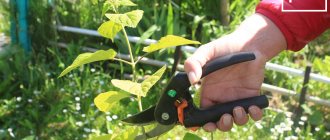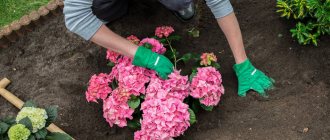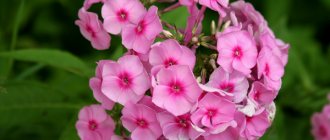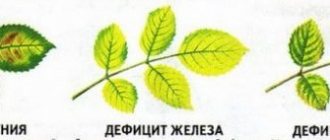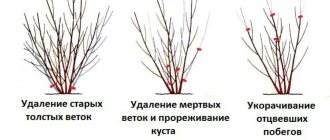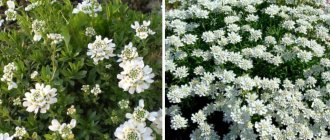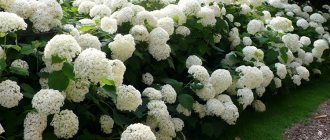When sorting out onions for winter storage, owners of dachas and vegetable gardens try to prepare the husks, which they do not throw away when cleaning the heads, but many do not understand why they do this. Vegetable growers who did not keep cows or poultry, using onion peels as fertilizer for the garden, noticed that cultivated plants not only developed better, but were also less likely to be attacked by pests, and suffered less illness when fertilized with infusions of dry peels. The children adopted the experience of their parents, helping to care for seedlings and weed the beds.
Why I decided to use onion peels in the garden
I never throw away dry skins left over from peeling onions, and I ask my family to do the same. At first this surprises my guests, but when I tell them about the value of this natural fertilizer, a natural remedy for pests, they rush to follow my example at home.
The fact is that onions (including peels) are rich in the following:
- Carotene is a source of vitamin A.
- Vitamins B, E, PP, stimulating vital photosynthesis and the full development of plants.
- Quercetin is a coloring pigment with bactericidal properties.
- Phytoncides are natural antibacterial compounds that destroy pathogens.
Such an excellent composition allows me to find several useful uses in onion peels for the garden, vegetable garden and many indoor plants:
- Organic fertilizer.
- Pest repellent.
- An immunological drug that increases resistance to adverse factors.
- A disinfectant that destroys various pathogens - viruses, bacteria, fungi.
- Material for mulch.
I highlight a whole lot of advantages from this product:
- Complex impact, stimulation of proper development.
- Ecological harmlessness for humans, domestic animals, beneficial insects.
- Improving the structure of the substrate - the husk not only nourishes the soil, but also makes it more airy, soft, and loose.
- Concentrated onion formulations help fight diseases of garden plants and indoor flowers - aphids, copperheads, flies and mites.
- Onion preparations are suitable not only for prevention, but also for treatment and restoration of affected plants.
I will share various uses of onion peels, recipes for healthy solutions that our grandparents used.
Compound
Onion peel is the golden peel of ripened onions. There are many debates about onion peels on the pages of gardening websites, forums and blogs. To figure out where the myth is and where the reality is, let’s take a closer look at the chemical composition and biological activity of natural raw materials.
Organic Ingredients:
- carotene – carotenoid fats, plant pigments, strengthen protective functions, stimulate the development of the vegetative part of plants;
- phytoncides are volatile bioactive substances that kill microbial flora.
Mineral composition:
- calcium – increases soil fertility by activating the activity of beneficial soil flora, stimulates nutrition at the cellular level;
- iron – completely absorbed by plants, a microelement necessary for oxidative and reduction reactions in the soil;
- potassium is a mineral stabilizer of structural processes in the soil, ensures the production of carbohydrates and plant cell growth.
Vitamin complex:
- group B – B1 – growth stimulator;
- PP (nicotinic acid) – promotes the absorption of carbonic acid, participates in the formation of enzymes;
- vitamin C – supports the immune system, optimizes breathing processes and metabolic function; protects seedlings from diseases at the beginning of growth, affects growth processes;
- vitamin E – an antioxidant-stimulator of resistance of garden crop cells against viral infections;
- vitamins of group P - rutin, quercetin - natural flavonoids, antioxidants, neutralize the effects of ultraviolet radiation, heavy metal salts and nitrates; prevent the spread of bacterial infections and viruses, enhance the effect of ascorbic acid.
Using onion peels for seedlings
The natural remedy is useful already at the initial stage of crop development - seedlings. This is not only a nutritious fertilizer, but also a preventive drug against many diseases:
- blackleg;
- all types of rot;
- bacteriosis;
- powdery mildew and others.
I traditionally water the seedlings with onion infusions. I prepare them like this: pour the dry mass with warm or hot water in an approximate ratio of 1:2. I leave it overnight, and for greater concentration – for a day. I carefully water the seedlings with onion mixture.
If I notice pests on the seedlings, then I add about 1 tbsp to the finished infusion. a spoonful of household or green potassium soap shavings. This component makes the product more sticky, retains it on the leaves, which prolongs the exposure time.
Properties and Application
To take advantage of all the beneficial properties of the husk, you must first carefully select the raw materials to obtain the fertilizer. Onion scales should be golden brown, without black or brown dull spots - these may indicate a fungal infection on the onion.
Decoctions
1 recipe
To prepare fertilizer from onion peels, a decoction is made from it. To do this, pour two liters of boiling water into a glass of onion peelings, bring to a boil, and after 4-5 minutes remove from the heat and leave until it cools completely. There is a slow release of all substances concentrated in the onion peel into the liquid.
It is not necessary to strain such a decoction; the soaked scales, once in the soil along with watering, will serve as a good mulching agent. The fact that they are saturated with water does not give reason to believe that they can somehow deteriorate or become moldy: there are still a lot of phytoncides and tanning substances left in them to prevent this.
2 recipe
This recipe is suitable not only for watering and fertilizing, but also for spraying garden crops or indoor plants.
Fill a glass of husk with 2 liters of water, bring to a boil, remove from heat and wrap well so that cooling occurs as slowly as possible. You can also use a thermos for this purpose, the effect will be even more noticeable.
After cooling, when the broth acquires a dark brown color, it is diluted in a bucket of water, and in this form the plants are sprayed or watered, but not more than twice a month - the product is very strong and rich.
Recipe 3
For those who do not want to bother themselves with boiling or other manipulations. It is enough to simply scatter the husks among the beds, sprinkle them with soil, then water them with plain water over and over again. Once wet, the husk will gradually release beneficial substances into the soil and plant roots.
Husk infusions
Their difference from decoctions is that for preparation you do not need to heat and boil water; just pour cold water over the husks. True, the readiness time of the solution is extended - up to 4-5 days.
Recipe 1
For spraying fruit and berry bushes, fruit trees.
A glass of husk is poured into a bucket of cold water and placed in a warm place (room temperature) for four days. After infusion, strain and spray the crowns with a fine stream. Husks from the infusion, as well as from the decoction, can be used as mulch.
Recipe 2
It will require much more husk - half a bucket. This number of scales is poured with hot water to the brim and left to infuse for 2 days. After straining, spray the plants if they have aphids or other pests. The product will not only get rid of insects and other pests, but spraying with it will serve as a preventive measure against fungi and mites.
Recipe 3
For preventive spraying against laid insect eggs and larvae hatched from them.
A glass of husks and 20 grams of onions are poured with a liter of boiling water, left under a closed lid for at least 9 hours, after filtering, the leaves and stems of the plants are sprayed.
Finely grated soap shavings are added to any spraying compositions based on onion peels, unless they are also used for watering at the same time, for better adhesion to plants.
Onion peel mulch
It serves not only as a means of mulching, but also as a therapeutic and prophylactic substrate (not a single insect can tolerate the smell of onion derivatives), as a fertilizer - as the husk soaks in moist soil, it begins to release all the useful substances stored in it.
It is advisable to apply it to the ground a few days before planting the plants in the ground. To do this, the husks are scattered over the surface of the beds, choosing a windless day. They quickly dig it up with soil, water it a little so that the process of releasing the necessary substances from their husks into the soil begins, and after 2-3 days they plant seedlings or sow seeds.
How to use a decoction or infusion
I will share with you my grandmother’s simple but effective recipes that help her grow a royal harvest.
onion infusion for the garden
Decoction
The most popular onion fertilizer is decoction. I will present to you two simple cooking methods:
- A mild decoction. Take 2 full handfuls of dry peel, fill them with 10 liters of water. Bring the mixture to a boil, then simmer for 5 minutes. Cool, leave for 4 hours.
- Concentrated decoction. Immediately fill the onion scales with hot water in a ratio of 1:2. Place the container with the mixture on the fire and bring to a boil. Then leave for 2 days.
I use decoctions as a universal fertilizer for all garden dwellers. Another use of the product is as a natural insecticide. The decoction helps to cope with a whole host of enemies:
- aphid;
- codling moth;
- spider mite;
- flea beetles;
- thrips;
- Colorado beetle.
If the composition is applied as a fertilizer by root watering, then as a preparation against pests - by spraying. For greater efficiency, I dilute fine shavings of laundry soap in it. I pour the mixture into the sprayer tank and treat the affected seedlings for treatment, and healthy ones for prevention. There is no need to think about personal protection here - onion broth is safe for both the gardener and the plantings.
The most effective decoction will be on the day of preparation - try to use it for its intended purpose within 4-6 hours. Otherwise it will go rotten. will be useless for planting.
Onion fertilizers are harmless, so you can use them frequently without fear:
- As a fertilizer: after 5-6 days.
- As a pest control: after 3-4 days.
A little grandmother's secret: the most useful husks are rich in color. It contains more active substance - coloring pigment.
Cold infusion
The simplest recipe is to prepare an infusion that does not require heat treatment. In order for the composition to become useful, it is infused a little longer than the hot remedy. I will present several options for infusions of varying concentrations:
- For 1 liter of water at normal room temperature - 20 g of dry husk. It is enough to leave the mixture for 1 day in a dark place.
- Heat the water to 40-45 C. Place the husks in a thermos or other hermetically sealed container. Fill with water and leave for 15-20 hours in a warm space.
- Fill the onion “scales” with warm water 1:2. Leave for 3-5 days. This is the most concentrated infusion that can also be used to eliminate pests.
The resulting composition can be used for both open and closed ground. As I noticed, cultures respond very positively to it:
- Greenhouse cucumbers. Onion infusion is not only a fertilizer, but a means of preventing the proliferation of pathogenic microflora. The latter prefers a comfortable warm and humid greenhouse climate.
- Tomatoes. The most effective application of fertilizer is at the root. If the plant blooms poorly and does not form an ovary, I water the leaves or spray with onion composition.
It is believed that natural infusions are much healthier than decoctions. After all, the husk stays in water for a longer period of time, managing to release more useful substances. The result is a concentrated and fast-acting solution.
Hot infusion
Another grandmother’s advice is to prepare a hot infusion:
- For a liter container with husks - 8 liters of boiling water.
- I fill the peel with water and leave it for 24 hours.
- I filter the composition and dilute it with plain water (1 part concentrate to 5 parts water).
I use all infusions as organic fertilizers. Their big advantage is versatility. Suitable for most fruit, vegetable and berry plantings:
- cabbage;
- tomatoes;
- pepper;
- zucchini;
- potato;
- raspberries;
- strawberry;
- grape;
- perennial fruit trees.
For all plants, this is replenishment with a complex of necessary micro- and macroelements, a means for loosening the substrate.
Alcohol tincture of onions
To fertilize vegetable crops and protect against diseases and pests, you can also use an alcohol tincture of onions. It is made from husks, using regular vodka or homemade moonshine as a base.
Preparation of alcohol tincture:
- pour onion peelings into a 0.5 liter glass jar;
- fill the container with vodka up to the neck;
- tightly seal the jar with a lid and place for 7 days in a dark and warm place;
- The prepared product must be stored in the refrigerator - in this case its shelf life is 6 months.
An alcohol tincture of onions can be used to disinfect, improve germination and germination of seeds before planting them in open ground. For this purpose, prepare a solution of 200 ml of water and a tablespoon of alcohol concentrate.
Vodka infusion is used to fertilize vegetable crops. For the working solution, dissolve 3 tablespoons of alcohol concentrate in a bucket of water. Spray the leaves of plants or water them at the roots with a watering can.
Dry onion peel and its uses
The laziest way to use onion peelings is to use them dry. This is an excellent fertilizer and mulching composition. It is not difficult to obtain - collect the husks, dry them in a bright, warm and dry place. Then store in paper bags or bags made of natural “breathable” fabric.
Using the collected cleanings is as easy as shelling pears:
- Feeding. Apply the husks during spring or autumn digging when preparing the beds. Another way is to pour a heap of fertilizer into the bottom of the hole when transplanting seedlings. But here we need a measure - no more than 3 liter cans of husks per 1 m2. Applying more, of course, will not harm the plants. But the problem is different: saturating the soil with onion essential oils changes the taste of the crop. Cucumbers, for example, acquire an unpleasant bitter taste.
- Mulch. Grind the onion “scales” and scatter them around the planting stem. Light material is best used in a greenhouse - in open conditions it can be blown away by the wind. Dry onion peels have a triple effect here: mulching, fertilization and disinfection.
- Disinfection, prevention. Dry husks are very useful for greenhouses - scatter them around the perimeter of the space to prevent the appearance of pests.
Another use for some reason unknown to many of dry onion “scales” is for long-term storage of potatoes, carrots, and celery root. Before moving the crop to the cellar or basement, I cover the root crops with husks. This protects them from rotting - onions are known for their antiseptic, antimicrobial properties.
Recommendations for use
In the garden, vegetable garden or dacha, onion peels will be useful both as a fertilizer and as an insecticidal agent:
- during autumn digging, onion scales can be added to the soil or added to the holes immediately before planting;
- The husks are mixed with peat or sawdust as mulch. This mixture is sprinkled between rows or trunk circles of trees and bushes. The product will protect the soil from drying out, slow down the growth of weeds and serve as a fertilizer;
- when watering strawberries with onion infusion, the berries become larger and tastier, and using the product on carrot beds will make the root vegetables more tasty and improve their presentation;
- the cake remaining after decoctions or infusions can be placed in compost or buried directly in the garden;
- Husks for preparing products should be harvested only from healthy bulbs.
After reading our article, every housewife, knowing about the benefits of onion peels, will not throw them away. If you do not have a vegetable garden or a summer cottage, then use onion remedies to improve the health of indoor flowers. All plants will be grateful for such universal feeding.
Using onion peels for indoor plants
In addition to the vegetable garden, I effectively use onion products for indoor floriculture. I prepare the decoction according to the recipe:
- I fill a handful of “scales” with 1.5 liters of water.
- Bring the mixture over low heat to a boil.
- I boil for 7 minutes.
- I strain, cool and use as intended.
I use the following working compositions:
- Soil disinfection. Before transplanting indoor plants, I disinfect the substrate with onion infusion. This treatment destroys pathogens and pest larvae without changing the chemical composition or structure of the soil.
- Fertilizer. For this application, the foliar method is effective - spraying from a spray bottle. Treatment stimulates the growth of green mass and the formation of buds.
The resulting composition is universal and safe - it will not harm even the most exotic of indoor “greens”. But, as with garden plants, only fresh infusion is recommended for them. Using the old one is ineffective - all the useful components have time to “evaporate”.
However, dry peel remains effective for a long time. You can add it directly to the soil mixture when replanting plants. To make onion peels serve as an excellent fertilizer, follow my little secret: water the flowers with slightly warmed water (up to 27-29 C).
Which plant seedlings can be fed with this fertilizer?
Seedlings of all plants will look better and healthier after fertilizing with onion peelings. Peppers, tomatoes and cucumbers are especially fond of such procedures. Onion remedy will prevent yellowing, stretching and diseases of seedlings.
Did you know? Every year in Europe, about 0.5 million tons of onion peels are thrown away. And on the eve of Easter, when it is used as a dye for eggs, prices for this raw material are about 22.50 euros per 1 kg, while the price of onions
-
about 2 euros.
It can be used either in the form of infusions or decoctions, which are used to water or spray seedlings, or by adding dry cleaning agents to the soil for planting. Watering or spraying with an infusion of onion peels prevents the occurrence of a seedling disease such as black leg, which can destroy almost all plantings.
The method of preparing the product for seedlings is very simple: pour a handful of husks with a liter of boiling water and leave for about 12 hours. This product can be used for both watering and spraying. For watering, you can prepare a more complex remedy: combine 2 handfuls of peelings with 1 tsp. ash and pour a liter of boiling water. Leave for a day and you can use it.
Watering or spraying is carried out at intervals of a week. After planting in a garden bed or greenhouse, young plants can also be watered with onion solution. After 10–12 days, 0.5 liters of this fertilizer is poured under each bush. Later, the norm can be increased to a liter. Regular spraying (once every 7 days) will significantly increase the number of ovaries.
Important! It is preferable to use the peels of red onion varieties, they contain more quercetin. This substance strengthens seedlings and promotes rapid growth.
Decoction for pest and disease control
I have already written that onion compositions help effectively eliminate all kinds of garden pests:
- aphid;
- spider mite;
- butterflies and caterpillars;
- copperheads, etc.
I will present the most effective, in my opinion, home remedies made from onion peels to help cope with pests:
- For 250 g of dry husk - 10 liters of water. Leave the solution for 4 days, then strain and use for spraying. To get rid of uninvited guests once and for all, repeat the treatment three times after 5-day breaks.
- Fill a 10-gallon bucket ½ full with husks. Fill with hot water, cover with a lid and leave for 12 hours. Strain the concentrate, dilute it with clean water 1:1. Spray the affected plantings with the working solution.
- The fastest recipe: 1 tbsp. a spoonful of husks and chopped raw onions - per 1 liter of water. Close the container with a lid and leave for 7 hours. Filter and use for spraying.
The prepared formulations are good not only as pest repellents, but also as medicines for diseases:
- Downy mildew. The disease is typical for cucumber plantings. Affects plants at all stages of growth. The peak incidence occurs during fruiting period (July-August). Onion infusion is an excellent preventive remedy. I use it about once a week. If the plants are already affected by the disease, they can be helped by spraying the product.
- Bacteriosis. A disease characteristic of radishes and cabbage. At the first signs (yellowing, blackening of foliage), I again spray the plantings with a preparation made from onion peels.
- Tomato diseases. Spraying tomatoes with onion infusion is not only disinfection, but also a nutritional supplement. When transplanting seedlings, don’t forget to add a little dry husk into each hole. This is a fertilizer for timely growth and fruiting, as well as protection against blackleg, wireworms, slugs and mole crickets.
Let me warn you that onion infusions are not stored for a long time - over time they lose their valuable properties. Therefore, I try to dilute less of the working composition - for a single treatment.
I am convinced that after my story you will also collect onion peels for use in the vegetable garden or indoor garden. This is a universal safe remedy - a fertilizer, a disinfectant solution against diseases and pests. It is very easy to prepare healthy decoctions and infusions. You can use the husk completely dry as top dressing and mulch.
Advantages and disadvantages
First, we list all the advantages of such feeding:
- Availability. You can collect the husks yourself throughout the year.
- Safety. It is very difficult to dilute the product so that the plants overdose.
- Environmental friendliness. Onion scales are organic; they decompose well and do not accumulate in the soil.
Now a few words about the shortcomings:
- This is not a complete fertilizer. If you have poor soil or plants often become victims of parasites, then use more effective mineral fertilizers, insecticides and fungicides together with onion peels.
- The solution is suitable for one treatment only. The prepared solution is not stored.
- Useless when severely affected by diseases and pests.
